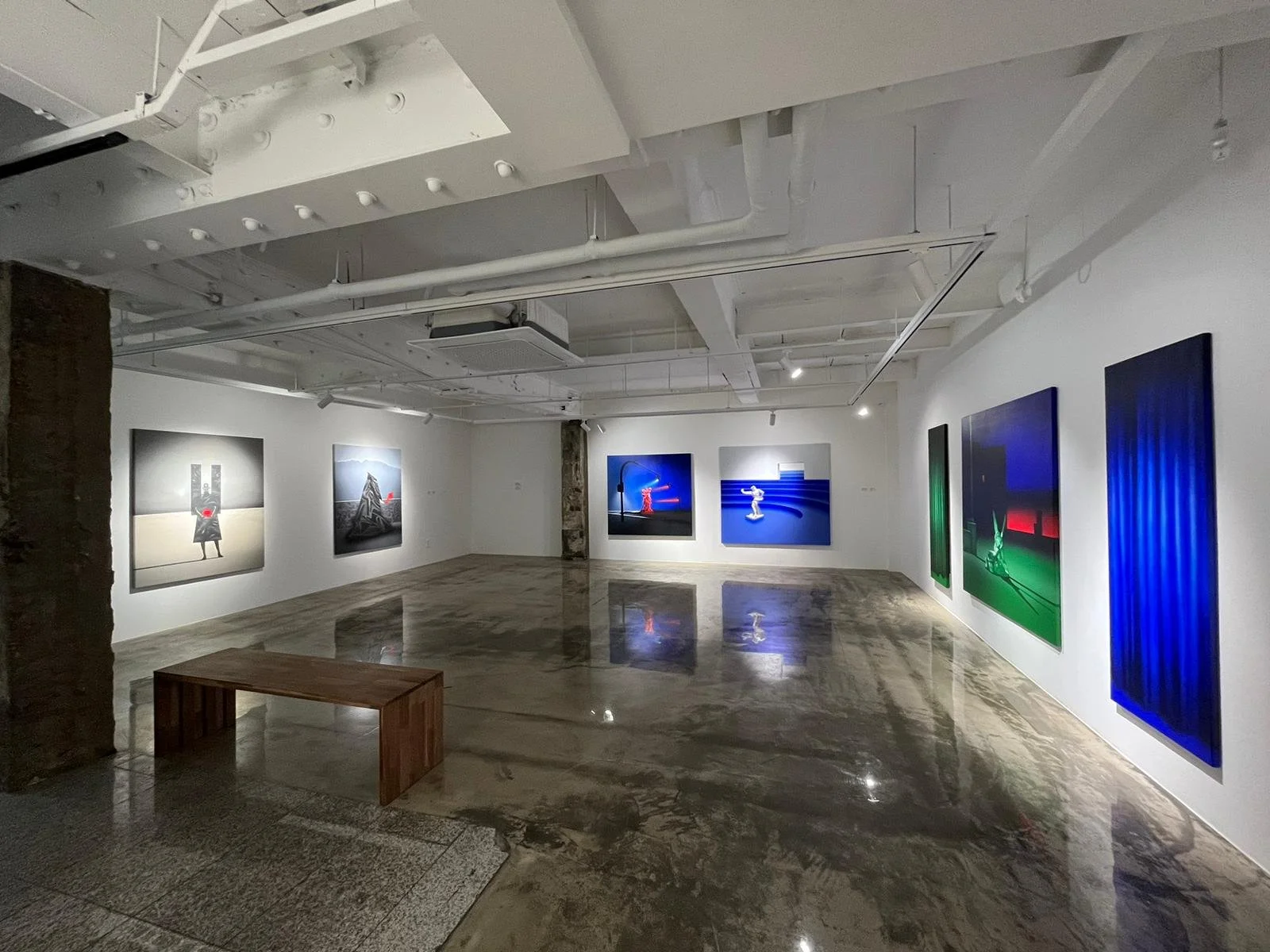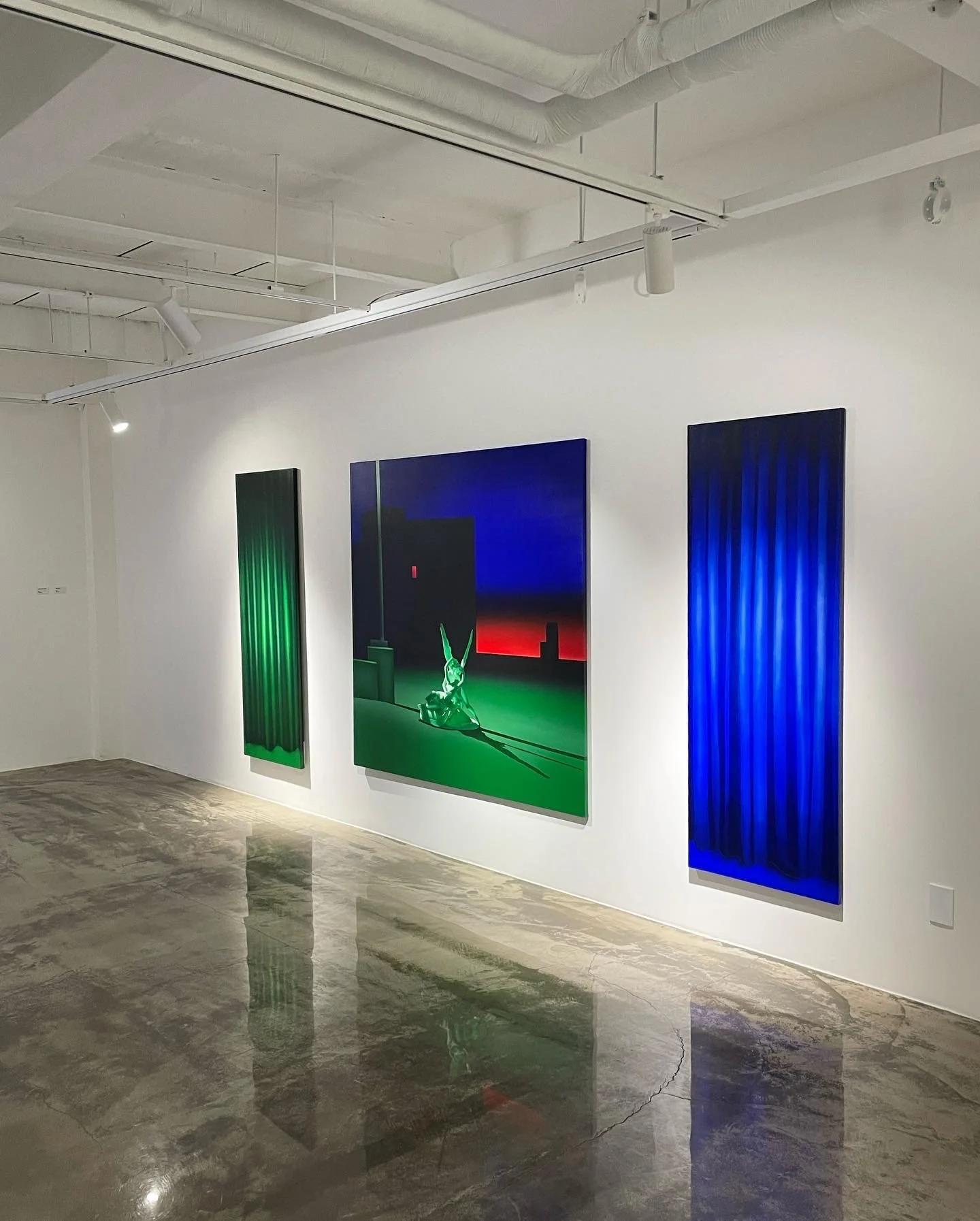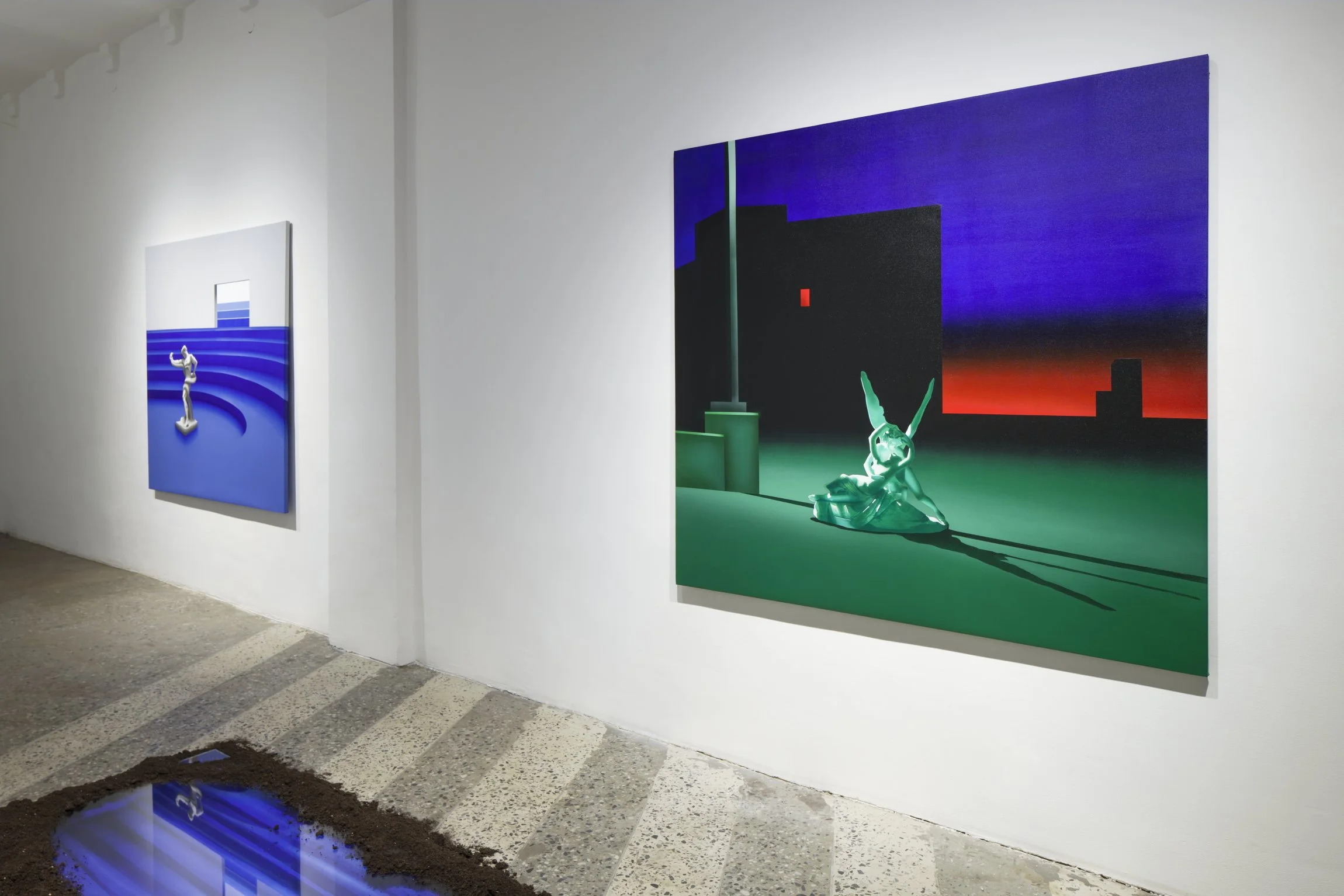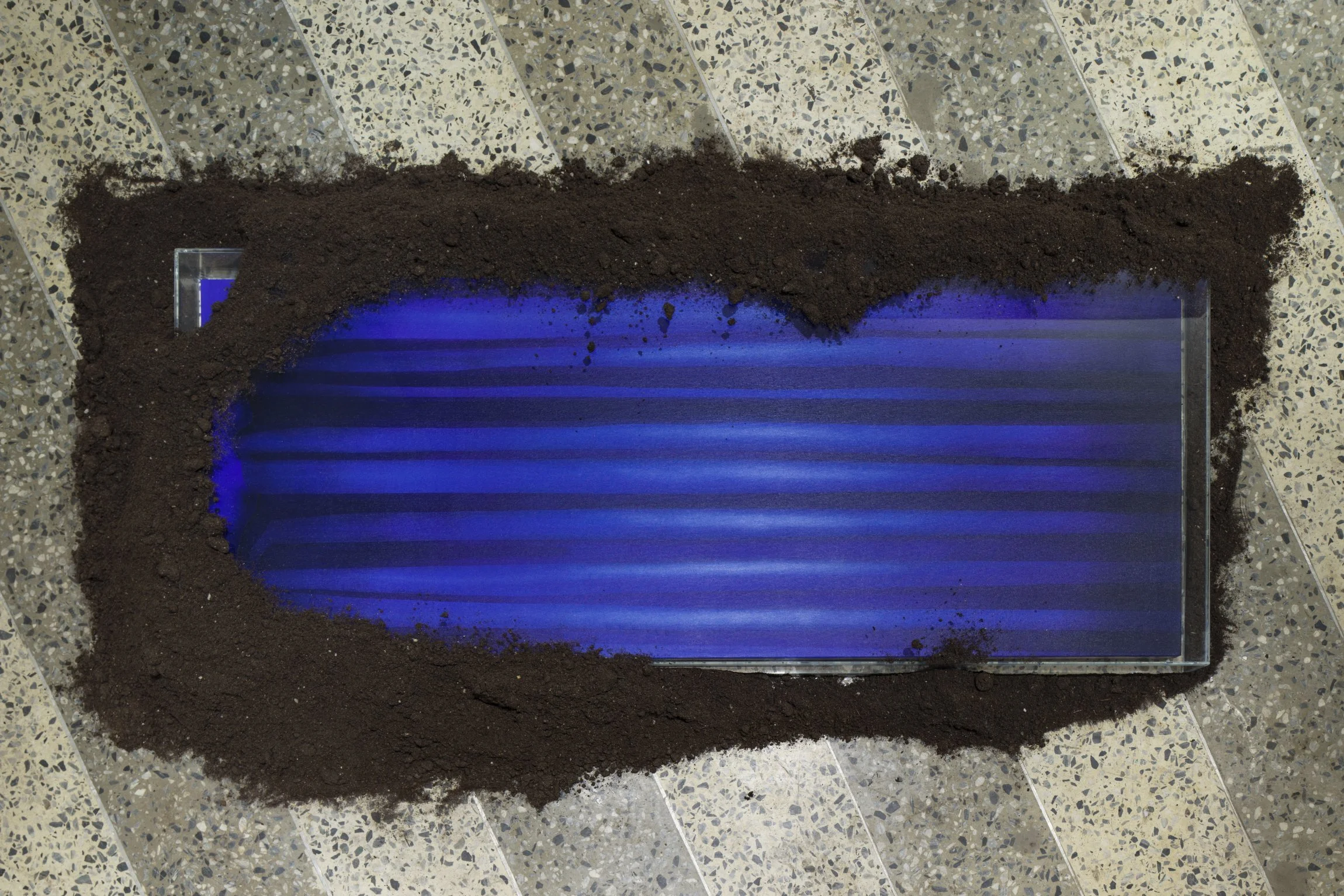Solo Exhibition at Art Corner H, Seoul, South Korea
01/06 - 08/08/2023
PRELUDE
Art Corner H is pleased to present Prelude, Arnolds Andersons (b.1991, based UK and Latvia) first solo exhibition in Asia.
The intense colours, graphic spaces and distorted depictions of the body in his work are a reflection of the rejection and betrayal he felt as a young homosexual in Post-Soviet society. However, his work goes beyond mere disgust and negative emotions to symbolically represent a restored state of mind that is sublimated and restored through art, as evidenced by the restrained composition, dramatic colour contrasts, and figures that resemble ancient Greek statues. ‘Melancholy’* which is the sense of depression and loss that dominates in his work is sublimated by the bright light of his art. Starting from black and gray, it reaches intense primary colors, and the hard marble statue transforms into a soft-skinned human being, illustrating the process of sublimation.
In his work, we can see a glimpse of pansexuality, an attitude that does not classify people as female or male, but rather loves people for who they are, regardless of their identity or sexual orientation.The concept of pansexuality, presented at the beginning of the 20th century, is constantly being studied and expanded within the scope of cultural studies. On the other hand, in any era, there is always harsh criticism when one does not follow a discipline that is recognized by the majority. Though publicly criticized in his own time, Georges Sand was Chopin's soul mate and muse, and undoubtedly a major influence on his artistry.
*Derived from an ancient Greek medical term. It means "black" (melas) and "bile" (chole), referring to the four coloured fluids that make up the human body (red, yellow, black, and white), with black bile evoking feelings of melancholy and loss.
Text by Taeho Choi
Solo exhibition at LOOK! It’s a Gallery, Riga, Latvia
14/14 – 07/05/2022
LETSPLAYAGAME
Naive and idealistic world view, one that might be characteristic to a child, has been the bases for the latest series of paintings by artist Arnolds Andersons, who has returned to Latvia after being away for a decade. Game with the construct of memory and nostalgia, through the language of painting, is the approach the author uses to start a conversation about childhood, its ease and the process of coming of age.
Similarly, to sekreķiki, fragments of the particular phase of life has been encapsulated into five large-scale paintings, visualising the attempts to think of one’s surroundings, define the essential and form relationship with the unknown. Sekreķiki or “little secrets” has been a familiar game among the kids growing up during Soviet times as well as the 90’s. Boxes covered with a piece of glass, containing ‘treasures’ – in means of material and emotional value – were buried in the backyard, revealing the secret spot only to one’s closest friend. Candy-wrap, a doll, glass marbles, drawn cards, plucked flower – anything imaginable, that a child would find significantly valuable within his universe, while it’s in the size of his block.
Sekreķiki, painted by Andersons, are hiding metaphors for freedom and carelessness that can be experienced through a game. How different a thirty-year-old’s attitude towards life and belongings is – when just being is the most challenging state. For a child, the world is unspoiled; a child believes in angels and the eternal. The sculptures, painted in a manner of realism, frozen cinematographic frames of the urban environment, are exactly like that. The characters of Greek mythology are premature symbols, wrapped in the Madonna blue and illuminated by street lights. Idealised, embellished. Just like the childhood and it’s fragments, that becomes even harder to uncover and analyse with time.
Fabricated reality executed to perfection is the signature of Arnolds Anderson’s work. The course of the creation of painting cycles follows a principle of a diary, forming collages from stream of current images and emotions, and letting the canvas become a space for the author to collect and let go. Whether they be stages of personal relationships – being together and coming apart, or emotional states – fulfilment and loneliness; the system of characters built and the surreal environments created distinguishes him from other artists of his generation.
Text by Elina Sproge
Solo Exhibition at D84 Gallery, Riga, Latvia
15/09 - 20/09/20
STRANGER
One of the key inspirations for this body of work is a book I read recently called “Talking to Strangers” by Malcolm Gladwell, particularly the following paragraph:
“...we think we can easily see into the hearts of others based on the flimsiest of clues. We jump at a chance to judge strangers. We would never do that to our- selves, of course. We are nuanced and complex and enigmatic. If I can convince you of one thing in this book, let it be this: Strangers are not easy.”
So, who or what is a stranger? Is it a single figure standing in empty convenience store in Tokyo, a vague silhouette appearing from nowhere, an old friend that you no longer connect with?
Strangers can be unsettling and easy to dismiss; their words, actions or intentions are frequently “lost in translation”.
Each painting features an anonymous figure, unknown silhouette, which appears to be part of and yet alien to their surroundings, offering lonelieness and tranquility in a self-sufficient way.
It quite often crosses my mind, if the subject is actually sitting unwell in the austere space, does it make it a stranger? Is it just a composition gone wrong or a bit uncomfortable to the viewers eye or quite opposite a pleasant surprise and a beggining of a new relationship. I guess it’s the unknown that we are so attracted to.
*10% of proceeds will be donated to Latvia’s Association of LGBT and their friends Mozaika / LGBT House Riga.














